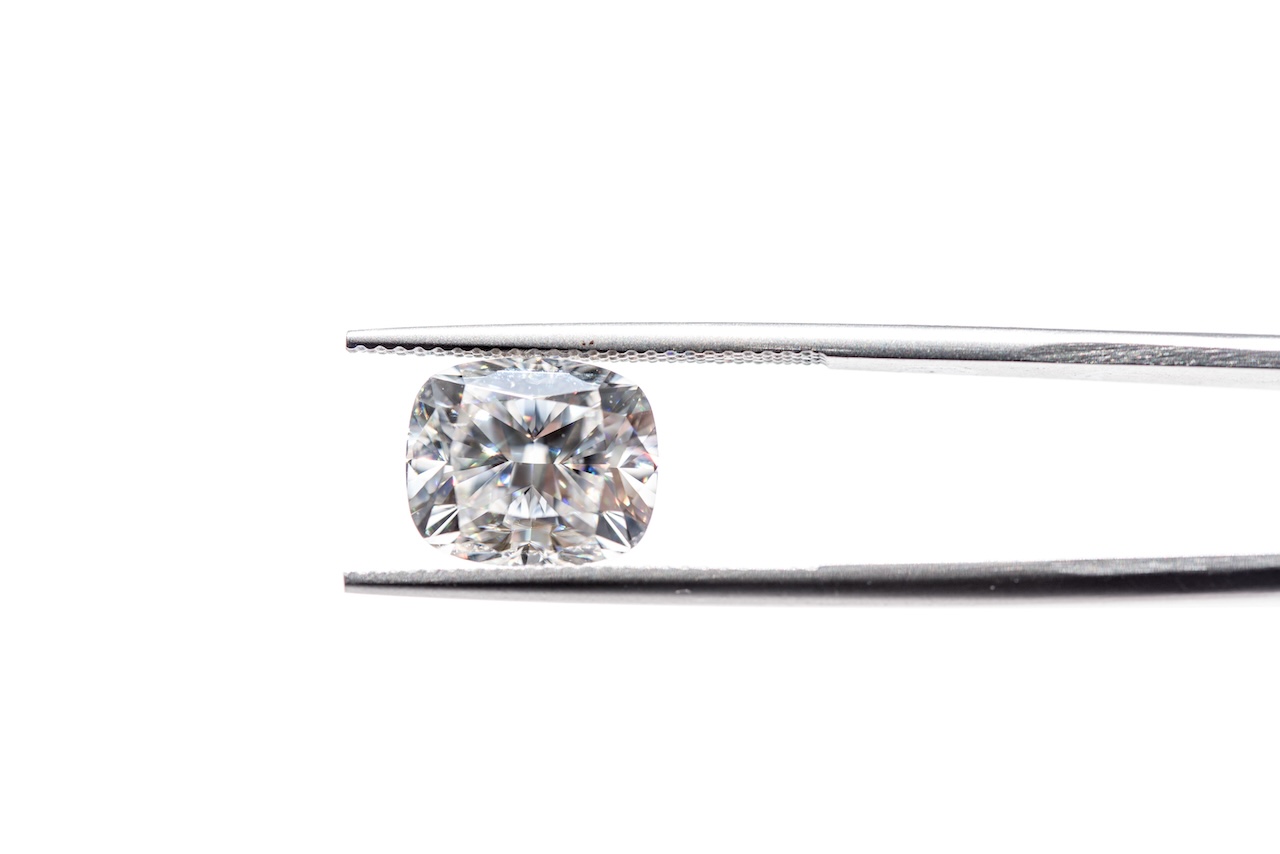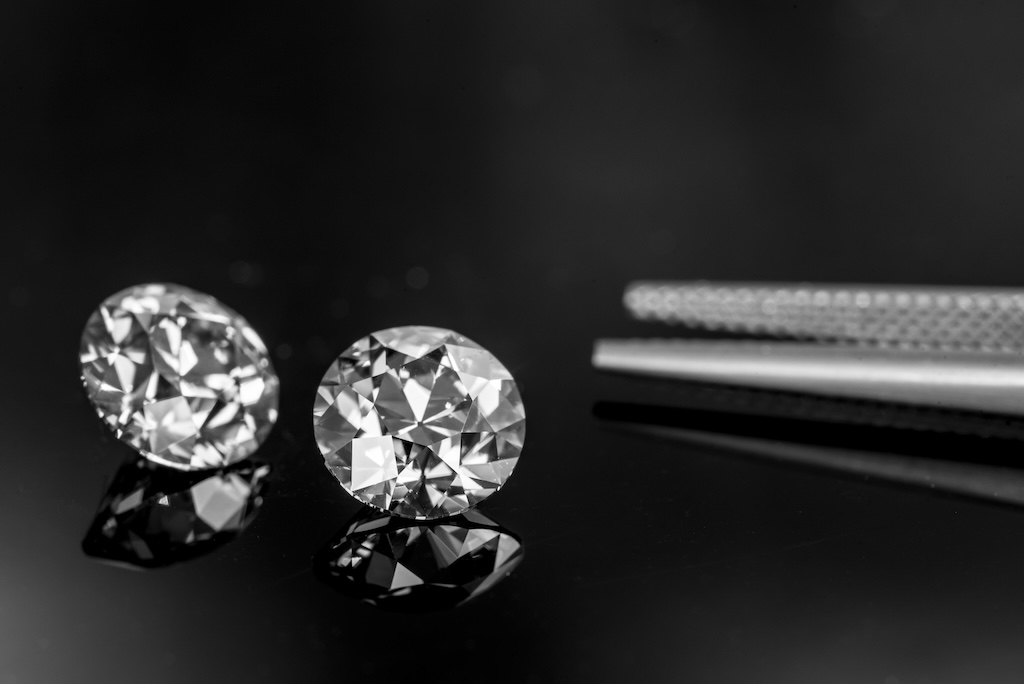Diamonds have always been associated with wealth and affection. However, lab-grown diamonds are a new participant in the game these days and come with mixed perceptions. People often ask questions like, “Are lab-grown diamonds of better quality, or do they have certain drawbacks?”
To put an end to hesitations let’s acknowledge that lab diamonds are real; though they are not created underground but rather in state-of-the-art laboratories. In a fraction of the time, science produces diamonds with the same remarkable properties as those that are mined. Let’s explore the key quality factors of lab grown-diamonds that define their value and appeal.
Quality Factors for Lab Diamonds: Chemical Composition
Understanding the quality of lab-grown diamonds requires a grasp of their chemical composition. All natural and lab-grown diamonds are essentially made of pure carbon crystals organised into a certain atomic structure. This structure gives diamonds their amazing brightness, fire, and unmatched durability.
The origin story of lab-created diamonds is the primary distinction between them and natural diamonds. While natural diamonds take millions of years to form under the Earth’s intense heat and pressure, lab diamonds are meticulously created in a matter of weeks using cutting-edge technology within controlled laboratory settings. The resulting diamonds have the same fundamental characteristics regardless of where they came from, which guarantees that they have the same extraordinary degree of durability.
While these stones boast remarkable quality, lab-grown diamonds are not flawless. Let’s examine the types of imperfections that can occur in these stones.
- Lab Diamond Flaws
Inclusions are microscopic flaws that can occur in even the most brilliant lab-created diamonds. They affect a stone’s clarity grade and value, but they do not affect the chemical composition or brilliance of the diamond.
Lab diamonds can have unique inclusions depending on their growth method:
- HPHT: Metallic flecks or needles from the growth process.
- CVD: Comet-shaped carbon bits or cloudy areas from uneven growth.
But they also share common flaws with mined diamonds, like:
- Crystals: During the diamond’s development process, microscopic mineral crystals become trapped inside the stone. They might show up as foggy patches or pinpoint reflections.
- Clouds: These are cloudy regions inside the diamond that are brought on by small crystal clusters or structural flaws. They can have an impact on a stone’s transparency and might be subtle or more noticeable.
- Feathers: Often brought on by stress during development, they are the delicate, feathery lines that run throughout the diamond. Depending on where they are and how large they are, they may be visible to the human eye.
- Pinpoints: Usually crystals or voids, these are microscopic white or black spots inside the diamond. The amount and visibility of them can affect whether they are solitary or grouped, which affects clarity.
Remember, inclusions are often invisible and don’t affect brilliance. Understanding these types helps you choose a lab diamond that balances quality and value for your budget!
Effect on Value and Clarity
Flaws impact the diamond’s clarity and value, but often in a subtle way.
- More Inclusions = Lower Clarity Grade: A diamond with many or large inclusions gets a lower clarity grade, affecting its price.
- Invisible Inclusions = Minimal Impact: Many inclusions are too small to see with the naked eye and have little effect on beauty or value.
- Focus on Brilliance: A flawlessly cut diamond might dazzle less than a well-cut diamond with some imperfections.
Understanding the flaws in lab-grown diamonds helps highlight the importance of cut quality. A well-executed cut can significantly enhance the diamond’s brilliance, despite its imperfections.
- Cut Quality of Man-Made Diamonds
When it comes to lab diamonds, cutting is essential. A well-cut diamond, like a tiny light director, maximizes sparkle and fire by controlling how light interacts with the stone’s facets. Do lab diamonds sparkle like a rainbow? Imagine light entering the diamond — a well-cut diamond bends and reflects light to form a flaming rainbow, but a poorly-cut diamond allows light to escape and becomes dull.
Popular diamond cuts like round brilliant and princess brilliant are specifically designed for optimal light return, delivering dazzling brilliance. While fancy cuts like pear and oval require a skilled hand to achieve optimal sparkle. A well-cut diamond of any shape will be a captivating display of light and fire.

Just as a well-cut diamond maximizes sparkle, its durability is another crucial factor. Let’s explore how lab-grown diamonds stand up to everyday wear and tear.
- Lab Diamond Durability and Longevity
Lab diamonds are no different from other diamonds in their long lifespan. Let’s explore the science underlying their remarkable resilience and endurance, which make them a wonderful option for treasured heirlooms and daily use.
- Hardness of Diamonds: When it comes to mineral hardness, lab-grown and natural diamonds both rank perfectly high on the Mohs scale (10). So, the only materials that may damage them are other diamonds or certain synthetics. Regular wear and tear, like rubbing against clothes or bumping into things, won’t damage them.
- Heat and Chemical Resistance: Your lab diamond won’t be harmed by cooking at high temperatures or by unintentional contact with strong chemicals. Because of their remarkable stability, they are ideal for worry-free daily wear.
- Long-Term Care: Even when lab diamonds are quite resilient, they can eventually gather dust and debris, which will reduce their brilliance. To keep them shining bright, it is advised to clean them regularly using a gentle brush and a light dish soap solution. It’s an easy procedure that preserves the brilliance of your diamond for many years.
- The Shine: With the same remarkable strength and durability as mined diamonds, lab-created diamonds provide a stunning substitute. Wearing your lab-grown diamond ring or other jewellery piece with assurance will allow you to enjoy its stunning brilliance for many years to come, maybe turning it into a treasured inheritance in the future.
Visual Features: Sparkle, Brilliance, and Colours
A diamond’s cut, clarity, and polish determine its brightness and sparkle. A well-cut lab diamond will brilliantly reflect light, giving off the famously dazzling look of diamonds.
Lab diamonds also come in various colours, from colourless to beautiful colours, including pink, blue, and yellow. Diamonds range in colour from D (colourless) to Z (light).
Almost any colour, even uncommon ones that are hard to locate in genuine diamonds, may be created in a lab-created diamond. Exquisitely coloured lab-created diamonds, like brilliant pinks or blues, are frequently less expensive than their real-world equivalents.
Factors Affecting Colour Grading
The presence of trace elements throughout the development process affects a lab diamond’s hue. For example, boron produces blue diamonds, while nitrogen causes yellow colours. Customers have more alternatives since unique hues may be created in the regulated environment of lab-grown diamonds.
Lab-grown diamonds are a great alternative if you’re worried about ethical sourcing, want a gorgeous and long-lasting gemstone, or are just seeking something more affordable. You may make an informed choice that is consistent with your beliefs and tastes by being aware of their quality factors, defects, durability, and visual qualities.

